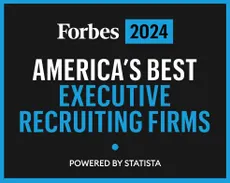By Lyn Currie, Managing Director, Waterstone Executive Search
One of the big people and culture trends coming out of the pandemic is that employees are re-evaluating what they’re looking for when it comes to work – looking for more growth opportunities, focusing on work-life balance, seeking out flexible work options, and perhaps most notably valuing purpose and meaning in their work more than ever.
For employers, especially those who are building a high performance culture, this means re-evaluating talent acquisition and talent retention strategies to ensure they’re focused not just on the roles or the people needed, but also on what the company is able to offer team members over and above a pay cheque.
That’s where a clear, concise employee value proposition (EVP) comes in.
.
Why Have an EVP?
According to Gartner, “[o]rganizations that effectively deliver on their EVP can decrease annual employee turnover by just under 70% and increase new hire commitment by nearly 30%.” A strong EVO can also “[i]ncrease the likelihood of employees acting as sponsors from an average of 24% to 47%” according to Link Humans.
Your EVP is not only your chance to make a great first impression with potential new hires, but also an opportunity to build a strong and meaningful connection with existing team members and to help drive employee engagement. Being clear on what your organization offers employees and making sure everyone – not just your people or HR teams – can articulate that offer in a consistent way is key.
.
Elements of an Effective EVP
- Authenticity: This is your chance to put your best foot forward and tell your story in a compelling way. It should be about highlighting what makes your company and team great, why what you do matters, what makes you different from your competitors, what people can expect when working with you, and where you hope to go in the future. It should be accessible and reflect the tone and expectations that employees will find once on board. Is your culture playful and full of humor? Are you a serious, professional bunch who expect the same from new hires? Whatever your culture and your story, presenting it in an authentic manner will help ensure everyone knows what they’re getting and what they can expect. And that’s the goal.
- Purpose and values: Your EVP needs to lay out the company’s purpose and values and help articulate how team members contribute to that purpose. In a 2021 survey by McKinsey, 63% of people surveyed said they “want their employer to provide more opportunities for purpose in their day-to-day work.” Stating up front what you’re working to achieve as an organization and the role employees can and do play in achieving that purpose will help future employees understand how they can have an impact by joining the team, and can serve as a touchpoint for current employees in their day-to-day efforts.
- Workplace culture: Culture is your competitive advantage – it’s the one thing about your organization that cannot be exactly duplicated, and so it deserves to be highlighted in your EVP. Being clear about your culture will help people understand what they can expect when joining the company, and it can also help people self-select out of your organization if your culture doesn’t appeal to them or if they can’t envision how they would fit (and help growth) that culture. Are you high performance, highly collaborative team? Do you operate in a fast-paced, agile and competitive environment? Is a sense of humor or a sense of adventure key? Take the time to get clear on your culture and articulate what you expect from your team (and what they can expect from you).
- Total rewards: Compensation and total rewards can’t be ignored. People want to know they’re being compensated fairly, but when a candidate looks at an opportunity today they aren’t thinking just about pay. They’re also looking at benefits and wellness packages, opportunities for training and career growth, flexibility (in where, when or how they work), and of course culture.
No matter how your EVP comes together, or what it covers, the key to making this an effective tool is ensuring that everyone on the team understands and can communicate what it is that sets you apart from the rest. From your talent acquisition team to the C-suite, having a clear, consistent message about who you are as a company and why someone should want to join the team and help drive success will help you stand out from the crowd.
As a retained executive search firm, DRiWaterstone has 20 years of experience helping clients articulate their EVP as part of their talent acquisition efforts. Book a call with one of our search experts and see how we can help you find and retain top talent for your organization.






